Sealing sewer pipe
In each sewer system, sealing PVC pipe joints is an integral part of the work. As a rule, a special sealant is used for this work. In this article we will talk about what kind of sealant to choose and how to properly seal sewer pipes. But first, let's figure out why they need to be sealed.
Sealing sewer pipes is an important step in working with sewer pipes. If this is not done, then there is a chance that sewage will get into the apartment, respectively, an extremely unpleasant smell will appear. There are two main reasons for the need for sealing pipes that are underground:
- Sewage must not penetrate the soil.
- Groundwater should not penetrate the sewer pipe.
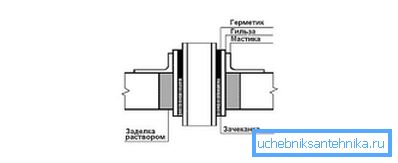
Sealing is especially necessary if the external sewage system has a large diameter and a considerable length.
Types of materials
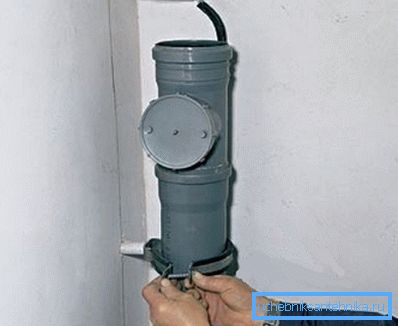
There are several options for sealing pipe joints. Consider the most common materials, as well as features of their application.
Sealing tape
This is a special adhesive tape, which has anti-corrosion properties. This method of sealing is considered one of the new. It has several advantages, namely:
- The use of this tape is possible not only for the joints, but also for sealing plugs, turning corners, bends, tie-ins and the like.
- Its high strength and performance, due to the characteristics of the material from which it is made - polyethylene.
- Easy to use.
- It has anti-corrosion and dielectric properties, so that it can be used when installing various types of pipelines.

As for its application, there are limitations and requirements. Before sticking the tape to the surface of the pipe, it should be cleaned of debris and dust. The surface must be completely clean! In the process of sticking the tape must be constantly stretched. If folds or wrinkles are formed, they must be eliminated. And the most important thing is observance of overlap. Overlap should be done exactly half the film, so that the whole tube will be under a double layer of tape.
Tip! If the pipeline is under constant exposure to ultraviolet rays, then you should take care of additional protection. The film does not tolerate UV radiation!
Silicone

The basis of silicone sealant is rubber. As a rule, it has excellent adhesion, so that sealing is performed with high quality. Moreover, before using this type of sealant, it is not at all necessary to additionally prepare the surface, unlike tape.
Sealant for sewer pipes has differences in the composition of the hardener. It is neutral and acidic. Neutral silicone sealant is universal. But acid can interact with acids, so it can vary greatly in price. It should be noted that silicone can seal not only metal pipes, but also PVC pipes. As soon as the silicone hardens, in appearance it resembles rubber, which makes the connection very reliable.
Other types of sealants
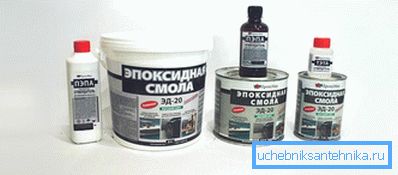
There are other methods of sealing sewer pipes:
- Technical sulfur. This material is used to seal the pipe joints of cast iron. Before using sulfur is heated to the state of melting, and only then poured into the seam.
- Asphalt mastic and petroleum bitumen. If ceramic piping is used, this material will be an ideal means for sealing joints.
- Epoxy resin. The most common tool in the domestic environment, which copes with its purpose for sealing sewer joints.
- Portland cement. Used for caulking a cast iron pipe joint.
- Jute or hemp rope, tar strand. Used to seal the joints of cast iron and ceramics.
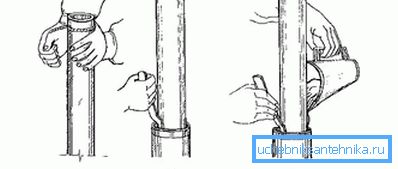
We have listed several options for sealing sewers and pipes. Now let's see how to properly implement it.
Sealing of socket joints
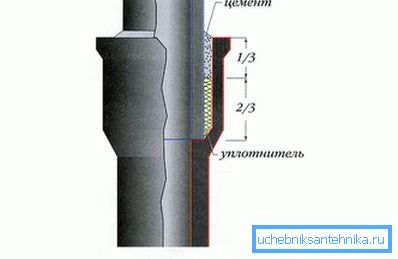
The whole technological process of sealing a socket joint can be divided into three important stages:
Stage 1. A pitch harness is prepared for the stamping. Its quantity should fill the socket by 2/3. After the bell must be uniformly filled with embossing.
Step 2. In the remaining space is poured mortar on a cement base. The brand of cement must be at least 300, and the ratio with water is 9: 1.
Step 3. After the cement has completely set, the compound is checked for leaks.
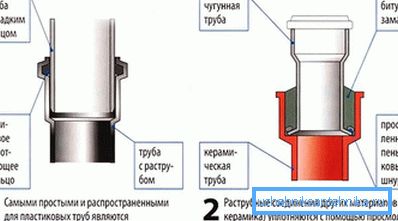
There is another option for sealing the socket. To do this, a solution is made based on self-expanding cement, which is carefully poured into the socket. Immediately before pouring the solution in a ratio of 2.5: 1, the pipes are centered. This is the easiest and fastest method of sealing sewer pipes.
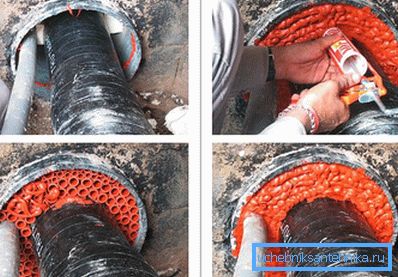
So, we have considered the options and methods for sealing joints. You should choose a suitable sealing option for you. Mainly several factors will influence this: where the pipeline is located and what material it is made of. Remember that you can do this work with your own hands. Therefore, do not be afraid to take on this job.